The Beginning
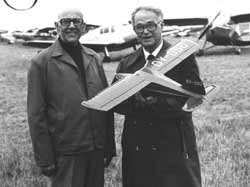 Skandinavisk Aero Industri was founded by Kramme & Zeuthen in August 1937 with financial aid from F.L.Smidth & Co., a Danish cement and minerals process equipment company. However, the design and assembly of their first aircraft had already taken place two years earlier.
Skandinavisk Aero Industri was founded by Kramme & Zeuthen in August 1937 with financial aid from F.L.Smidth & Co., a Danish cement and minerals process equipment company. However, the design and assembly of their first aircraft had already taken place two years earlier.
Kramme and Zeuthen first met in 1935 in a hangar in Copenhagen Airport, where Viggo Kramme was building a Mignet Pou-de-Ciel (flying flea) and where Karl-Gustav Zeuthen was taking flying lessons. Zeuthen had remarked “Why don’t you build a proper airplane?” to which Kramme retorted “Why don’t you design one for me to build?”, and the KZ-I was the result. The KZ-I was a small single-seat “sports” aircraft with a 38 HP engine.
Back in 1937, after the company registration, with Zeuthen as Chief Engineer and Kramme as General Manager, work began on the KZ-II. The KZ-II was a multi-purpose aircraft and was available in three versions. 1) KZ-II Kupe, was a two-seated general aviation aircraft with a cabin. KZ-II Sport, was an open cockpit development of the KZ-II Kupe with a more powerful engine, and the KZ-II Trainer, initially designed with a green-house type canopy similar to that of the DHC-1. However, the KZ-II Trainer was only produced with an open cockpit.
Skandinavisk Aero Industry quickly outgrew the rented facilities in Kastrup, Copenhagen Airport, and moved to Aalborg, where an F.L.Smidth building was taken over.
The War Years
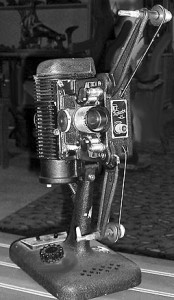 SAI had to diversify into manufacture of 16mm silent-movie projectors and electric cars during the second world war, when the German occupying forces banned all private flying.
SAI had to diversify into manufacture of 16mm silent-movie projectors and electric cars during the second world war, when the German occupying forces banned all private flying.
Aircraft production was not totally abandonned, however. During 1944, Zeuthen had completed the design of the KZ-III Lark as well as the KZ-IV twin-engined ambulance plane. Two prototypes of the KZ-III were made and painted in ambulance livery. Permission was granted by the Germans to test-fly the planes in 1944, despite of the fact that there was no stretcher or other emergency equipment in the plane. A school-glider of conventional design, the KZ-G1was built by SAI in 1943. The KZ-G1 was used by Danish Army Pilots trying to keep their skills, while waiting for the War to end.
Production
The company moved a couple of times in 1944-45, first to Hellerup and then to new locations at Copenhagen harbour. It was here that production of the KZ-III finally commenced. The KZ-III sold really well, and an improved version, the KZ-VII was designed and built. A factory was set up in an abandoned Luftwaffe hangar, but a fire destroyed the factory on 17 February, 1947. A rumour claims that it was arson or sabotage, but this happened after the war, and there is no proof of this accusation. In fact, SAI was a major supplier of KZ-II Trainer, KZ-VII and later KZ-X to the Danish Armed Forces.
After the war, the general aviation market was flooded by surplus aircraft like the Piper Cub (which was also produced in Denmark under license), amd F.L.Smidth decided to pull out of the aviation business.
Kramme & Zeuthen bought the controlling stake in the company and Mogens Hartung, a Danish government official married to the governess of Her Majesty, Queen Margrethe II, Ms. Mary North. The new SAI was focusing on aircraft repair and maintenance during the years following the War. (Mogens Hartung is also famous for being one of the Government Officials that stranded in Washington DC during the German occupation of Denmark).
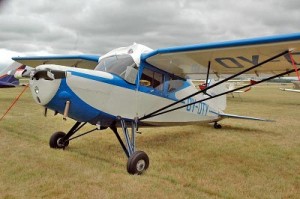 Several other designs were being considered after the war, including the KZ-V, a passenger plane similar to the deHavilland Dove, the KZ-VI, a twin-engined taxi and corporate aircraft, the KZ-IX, a military trainer similar to the AT-6 Texan, and the KZ-XI, an agricultural plane similar to the Piper Pawnee. However, none of these went into production.
Several other designs were being considered after the war, including the KZ-V, a passenger plane similar to the deHavilland Dove, the KZ-VI, a twin-engined taxi and corporate aircraft, the KZ-IX, a military trainer similar to the AT-6 Texan, and the KZ-XI, an agricultural plane similar to the Piper Pawnee. However, none of these went into production.
The last real SAI aircraft was the KZ-X, which was a two-seat observation and liaison plane. It first flew in 1951 and several were sold to the Royal Danish Air Force. A series of crashes was one of the factors that made Kramme and Zeuthen decide to stop aircraft production. The last ten years of SAI’s life, until 1956, when the company was producing warehousing equipment, shelves and steel office furniture.
The End
In 1954, Kramme & Zeuthen received an order for two acrobatic planes, the KZ-IXs, from Viggo Sylvest’s Flying Circus. The plane was flown by Peter Steen, the famous Danish pilot who had flown for the British Royal Air Force during the war. A copy of the Ellehammer Standard monoplane was also build by SAI to commemorate the 50 years anniversary of the first flight in Europe. This plane was flown by Viggo Sylvest.
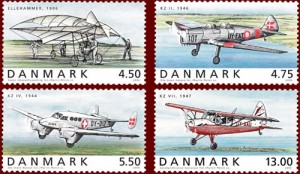 Kramme died in 1984, and Zeuthen in 1989. A series of postage stamps were printed in their honour in 2006, the centenial for the first flight in Denmark by Ellehammer.
Kramme died in 1984, and Zeuthen in 1989. A series of postage stamps were printed in their honour in 2006, the centenial for the first flight in Denmark by Ellehammer.
Many KZ planes are still flying. In fact, the Danish museum “Dansk Flymuseum” has a complete collection of KZ planes.
Photos and Video
A video showing Leif-Sylvest Jensen’s Flying Circus in 1954 is now available here. With comments by Gunnar ‘Nu’ Hansen, this has to be a classic. Shows KZ-II, KZ-III, KZ-G1, and KZ-VIIIs flying.
Photos are available in my photo gallery showing some of Kramme & Zeuthen’s other products, including windmill wings, electric vehicles and modular furniture.





 27/12/2009
27/12/2009




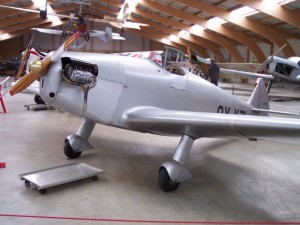




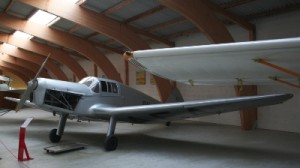 KZ-II Kupe
KZ-II Kupe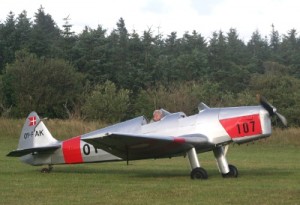 KZ-II Trainer
KZ-II Trainer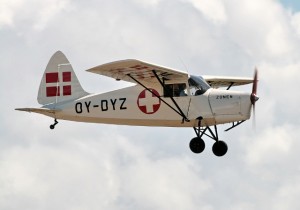
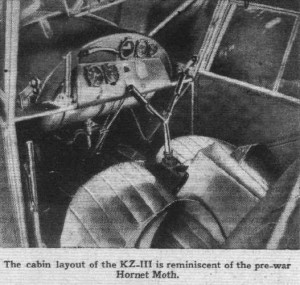
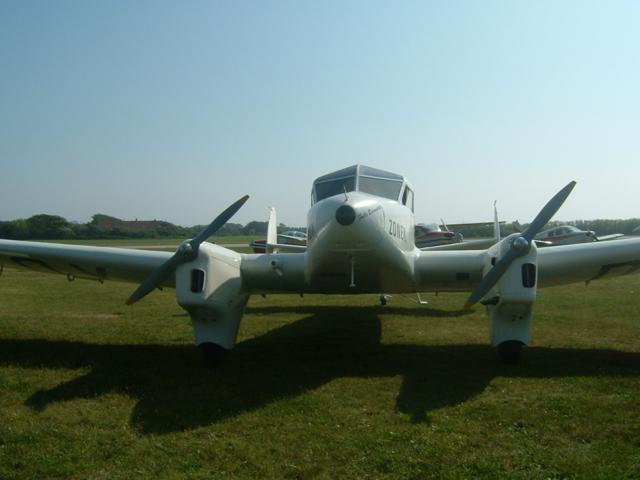
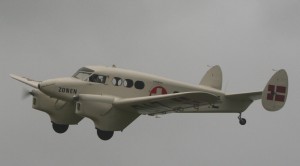 A few month later, members of the Danish government was flown to Bornholm due to the Russian bombardment of the island.
A few month later, members of the Danish government was flown to Bornholm due to the Russian bombardment of the island.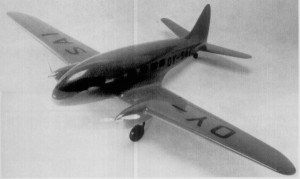 The KZ-V didn’t leave the drawing board. It was designed in 1944 as a two-engined aircraft similar to the deHavilland Dove, except entirely out of wood.
The KZ-V didn’t leave the drawing board. It was designed in 1944 as a two-engined aircraft similar to the deHavilland Dove, except entirely out of wood.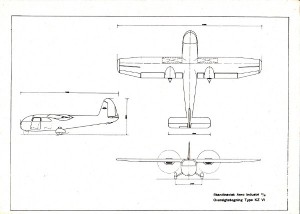
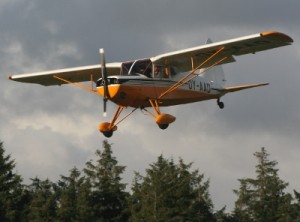 The KZ-VII was designed to address the short-comings of the “highly popular” KZ-III. The KZ-VII was a four-seater and the view rearwards was greatly improved, by adding a window at the back of the plane.
The KZ-VII was designed to address the short-comings of the “highly popular” KZ-III. The KZ-VII was a four-seater and the view rearwards was greatly improved, by adding a window at the back of the plane. 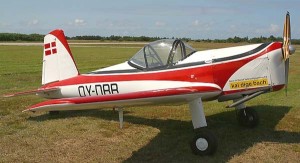
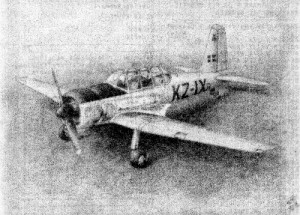
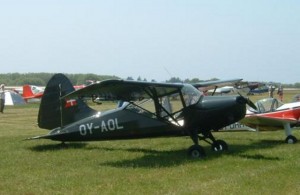
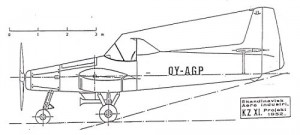
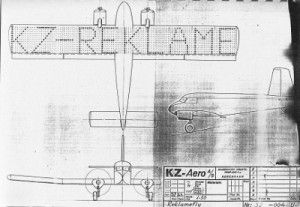
Hej Jesper,
I was looking for information on SAI aircraft and found this excellent site. Thank you for sharing this information!
Tak!